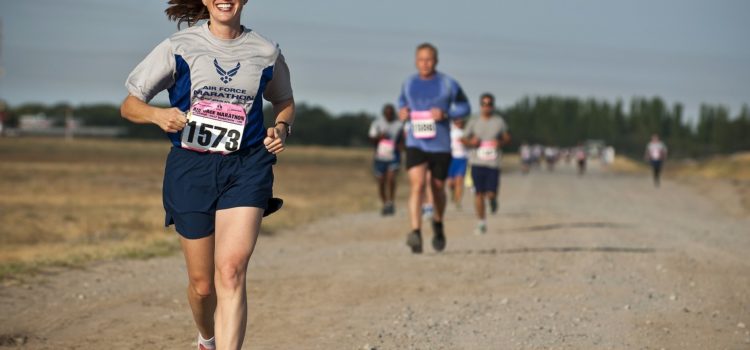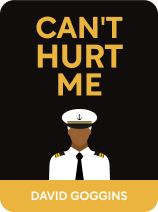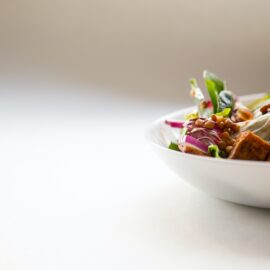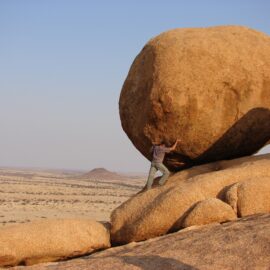

This article is an excerpt from the Shortform book guide to "Can't Hurt Me" by David Goggins. Shortform has the world's best summaries and analyses of books you should be reading.
Like this article? Sign up for a free trial here .
What is the Hurt 100? What was David Goggins’ Hurt 100 experience like?
According to David Goggins, the Hurt 100 was another chance to prove himself. He wanted to complete a 100 mile race no matter what.
Read more about David Goggins, The Hurt 100, and how he persevered.
David Goggins: The Hurt 100
Cars have an internal regulator, or governor, that limits how fast they can go. Humans are the same way—our mental governor gives us feedback, telling us if we’re in pain or feeling insecure. Many people listen too readily and stop doing a task when they’ve applied only 40 percent of their effort, leaving 60 percent on the table. Pushing past the governor means pushing through pain, insecurities, and other obstacles that make us want to quit before we’ve given our full effort.
Learning to gently push yourself helps break down your governor while gradually increasing your activity, helping you avoid injury and/or allowing your mind to get accustomed to the new workload.
Goggins learned how to manage his governor as he competed in additional ultramarathons to qualify for the Badwater 135. And for David Goggins’, The Hurt 100 required a strategy, too.
Finding Another Race
When Goggins finished the San Diego One Day, he called and emailed the director of the Badwater 135 to share his results from the race. He’d run 101 miles in 18 hours and 56 minutes and thought this was enough to qualify him for Badwater 135.
Instead, Goggins got an email back that the point of a 24-hour ultra race is to run the whole 24 hours, not just the miles stated. He learned shortly thereafter that to get accepted into the Badwater 135, runners were expected to submit an application showing their completion of other ultra races. So he decided to compete in an additional ultra race to be a more competitive applicant.
He selected a Hawaiian race called the Hurt 100. The race consists of five laps on a 20-mile circuit through the Hawaiian rainforest, including 24,500 feet of elevation change. David Goggins’ Hurt 100 race meant he’d be able to do the Badwater 135.
David Goggins: The Hurt 100 Race Day
Goggins had about a month before the Hurt 100 to practice running and strength training. He’d heard that it’s important to run 100 miles in a week in preparation for 100-mile races.
But it was not going to be easy to fit in training time while still working for the Navy. He started running to—and occasionally, from—work, at least three times a week. The route measured 16 miles one way. He gradually built up the number of miles he ran each week. He also woke up early to train with weights.
Race Day
Despite his physical preparation, the course was extremely demanding. Goggins encountered three main challenges:
- His Camelbak, a water reservoir he could wear while running, broke just 6 miles into the race. Though there were hydration stations spaced throughout the course, stopping frequently would affect his race time.
- He wasn’t used to running on trails. Trails have more obstacles than a typical asphalt road, including rocks, tree roots, and mud.
- He was dealing with pain in his legs.
Goggins realized that he could convince himself to keep going by dividing the remainder of the race into chunks. He’d say things like, “I just want to get to the top of that hill, then I can quit.” But instead of wanting to quit, hitting these mini-goals inspired him to keep going. Finding motivation to persist helped him dismantle his governor—by showing himself that he could keep going even when he didn’t want to, he adjusted his expectations of how far he could push himself.
He finished the race, and later that same day, he submitted his application for Badwater 135. The director told him he was accepted a few days later. David Goggins’ Hurt 100 race lead to Badwater.
Badwater 135
For David Goggins, the Hurt 100 wasa only the first step. He now had 6 months to prepare for the Badwater 135. In addition to physical training, he studied the race. He did things like researching the route, driving it, and watching race videos.
From this experience, he developed strategies for the big day, like having two help crews drive the route with him and set up a cool-down station for him every 1/3 of a mile. He also visualized how each leg of the race would feel and how he’d push through.
Race Day
Though he was arguably more prepared for this race than any he’d done before, Goggins still faced difficulty and wanted to quit. He became severely dehydrated about 7.5 hours in. To get through this, he worked to drink more water than he wanted, getting around his governor. (Shortform note: Sometimes, the thought of drinking a lot of water can be nauseating to a severely dehydrated person.) Ultimately, he came in fifth place.

———End of Preview———
Like what you just read? Read the rest of the world's best book summary and analysis of David Goggins's "Can't Hurt Me" at Shortform .
Here's what you'll find in our full Can't Hurt Me summary :
- What a Navy SEAL says about pushing yourself to achieve greatness
- How to put in more effort to realize your potential
- The 10 challenges you can take on to reach your goals






